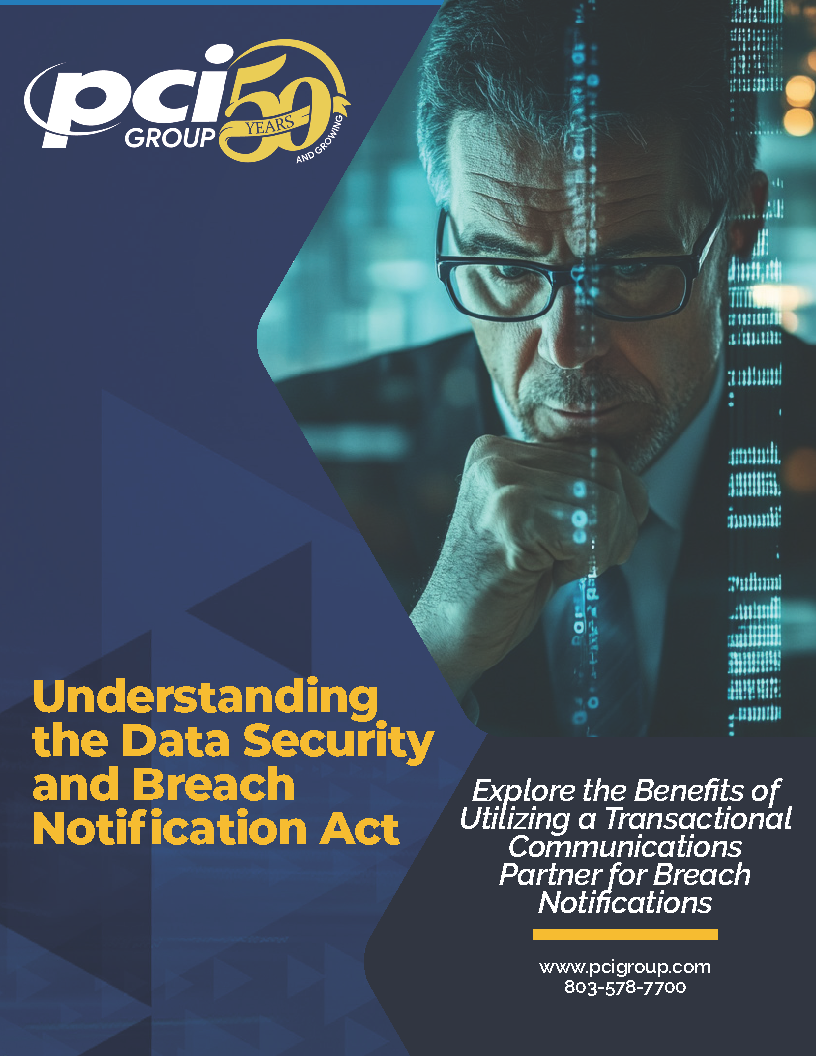Understanding the Data Security and Breach Notification Act (H.R. 1770): Implications for Print and Mail Notifications
In today’s data-driven world, safeguarding personal information is paramount. The Data Security and Breach Notification Act (H.R. 1770) (https://www.congress.gov/bill/114th-congress/house-bill/1770) is a crucial piece of legislation aimed at enhancing transparency and protecting consumer privacy in the wake of data breaches. This blog delves into how this act influences print and mail letter notifications and explores the role of email in meeting compliance requirements.
What is the Data Security and Breach Notification Act (H.R. 1770)?
 The Data Security and Breach Notification Act (H.R. 1770) was introduced to establish federal standards for notifying individuals affected by data breaches. The act mandates that entities must inform individuals of breaches involving their personal information and provide details on how to protect themselves. The act aims to create a unified approach to breach notifications across various industries, enhancing consumer protection.
The Data Security and Breach Notification Act (H.R. 1770) was introduced to establish federal standards for notifying individuals affected by data breaches. The act mandates that entities must inform individuals of breaches involving their personal information and provide details on how to protect themselves. The act aims to create a unified approach to breach notifications across various industries, enhancing consumer protection.
Key Provisions Affecting Print and Mail Notifications
- Timeliness of Notification: The act stipulates that individuals must be notified of a breach “as soon as possible” and no later than 30 days after discovering the breach. For print and mail notifications, this requires efficient processes to ensure letters are produced, addressed, and delivered within this timeframe. Delays can result in non-compliance and legal repercussions.
- Notification Content: According to the act, notifications must include:
- A description of the breach.
- The type of information compromised.
- Steps the affected individuals should take to protect themselves.
- The contact information of the entity for further inquiries.For print notifications, ensuring that all these elements are clearly presented and comprehensible is essential for compliance.
- Delivery Verification: The act emphasizes the need for entities to provide evidence of notification. In print and mail scenarios, this may involve utilizing mail tracking services or obtaining return receipts to confirm that notifications were successfully delivered to the intended recipients.
Utilizing Email for Data Breach Notification Compliance
While traditional print and mail notifications are vital, incorporating email can enhance the notification process. The Data Security and Breach Notification Act allows for email notifications, provided certain conditions are met. Here’s how email can support compliance:
- Faster Communication: Email provides a quicker method of delivering notifications compared to postal mail. For urgent breaches, email can be used to ensure timely communication, complementing print notifications where necessary.
- Enhanced Tracking: Email systems offer tracking capabilities that can confirm receipt and delivery. This digital trail is valuable for demonstrating compliance during audits and ensuring that notifications have been received.
- Cost-Effectiveness: Email notifications can be more economical than print mailings, particularly for large-scale breaches. By integrating email into the notification strategy, organizations can manage costs while adhering to regulatory requirements.
Implementing a Balanced Approach
 To effectively comply with the Data Breach Notification Act, organizations should adopt a balanced strategy that integrates both print and digital notifications:
To effectively comply with the Data Breach Notification Act, organizations should adopt a balanced strategy that integrates both print and digital notifications:
- Segmentation: Identify which recipients should receive print notifications and which can be reached via email. This approach ensures that all affected individuals are notified appropriately and efficiently.
- Regular Reviews: Continuously review and update notification procedures to align with current regulations and best practices. Ensure that both print and email notifications meet the requirements set forth by the act.
- Technology Integration: Invest in technology that supports both print and digital notification processes. Automated systems can enhance efficiency, accuracy, and record-keeping, facilitating compliance.
Conclusion
The Data Security and Breach Notification Act (H.R. 1770) introduces important requirements for data breach notifications, affecting how organizations handle print and mail communications. By understanding and implementing the act’s provisions, and by incorporating email as a supplementary tool, organizations can ensure they meet compliance standards and effectively inform affected individuals. Staying proactive and informed about regulatory changes is essential for maintaining consumer trust and protecting data privacy.
For more information on compliance and best practices in transactional printing, contact us using the form below.


